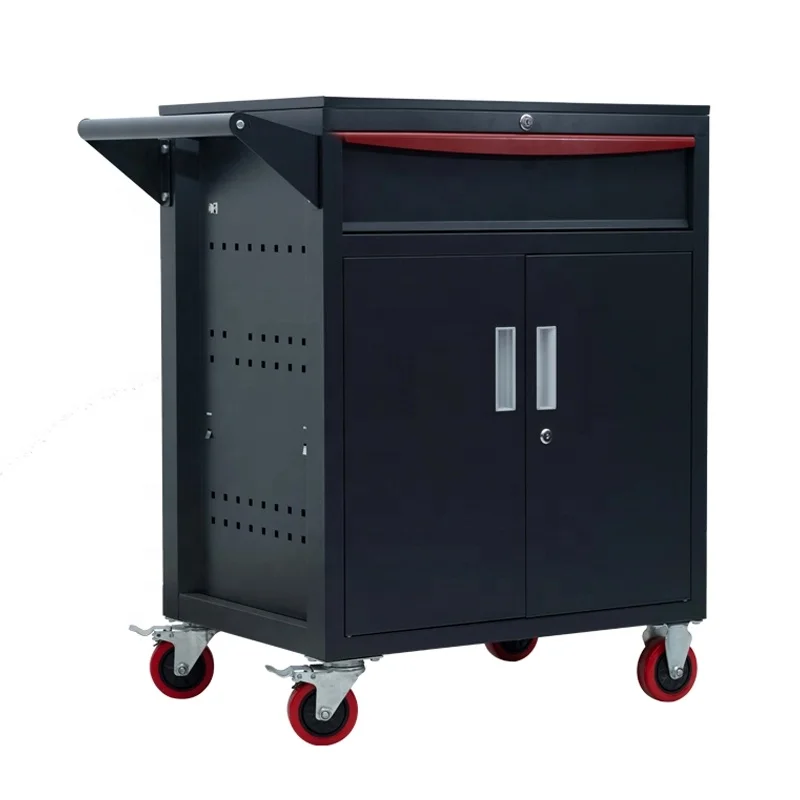Choosing Between Steel and Metal Cabinets: What's the Difference?
Understanding Steel vs. Metal Cabinets: Key Differences
Material Composition: Steel Alloys vs. Aluminum
When comparing steel vs. metal cabinets, particularly those made from common metals like aluminum, a critical factor to consider is material composition. Steel alloys, known for their strength and resistance to deformation, are typically composed of iron combined with carbon and other elements. This composition endows steel cabinets with a robust structure capable of withstanding substantial weight and stress over time. On the other hand, aluminum is lightweight and resistant to corrosion, owing to its natural oxide layer, but lacks the structural hardness of steel.
Manufacturing processes also differ significantly between these materials. Steel is often forged and subjected to processes like tempering and annealing to enhance its hardness and durability. In contrast, aluminum fabrication involves extrusion and casting, which are generally less energy-intensive, although they may result in higher material costs. Businesses choosing between these materials must weigh the initial and long-term cost implications influenced by these manufacturing processes.
Steel cabinets find applications in sectors demanding high structural integrity, such as industrial and commercial storage solutions. In contrast, aluminum cabinets are more prevalent in environments where weight reduction is crucial, such as aerospace and automotive industries, demonstrating their flexibility and effectiveness.
Durability and Resistance to Wear
Steel cabinets are renowned for their superior resistance to wear compared to those made from softer metals like aluminum. This durability stems from steel’s dense composition, which can withstand significant physical stress and impact. Typically, steel cabinets boast a longer lifespan, often lasting decades in intensive use scenarios. For instance, heavy-duty steel cabinets are frequently utilized in automotive workshops and industrial settings where their durability minimizes maintenance and replacement costs.
Statistics underscore this durability; steel cabinets often have a lifespan upwards of 20 years, compared to aluminum variants that might require replacement within a decade under similar conditions. Environmental factors such as moisture and temperature fluctuations also affect durability. Steel, when treated with protective coatings, remains resilient against rust and corrosion, while untreated aluminum can suffer from gradual degradation.
In environments exposed to harsh chemicals or variable climate conditions, steel cabinets provide robust protection for stored contents, ensuring longevity and reliability.
Weight and Structural Integrity
Weight considerations significantly impact the decision between steel and aluminum cabinets. Steel cabinets are heavier, posing challenges in handling and installation, but this weight also contributes to their structural integrity. The heavier mass provides stability and reduces the risk of tipping, which is critical in commercial and industrial environments where security and safety are paramount.
Steel’s structural integrity is crucial for applications that require secure storage, such as guarding against unauthorized access or supporting heavy items. The robust construction makes steel cabinets ideal for warehouses and factories, where the strength of the material ensures safety and longevity.
Conversely, the lighter weight of aluminum cabinets offers advantages in scenarios where mobility and ease of installation are desired. However, case studies have illustrated failures in certain aluminum cabinet designs under heavy loads, demonstrating the consequences of compromising structural choices.
By understanding these differences, businesses can make informed decisions tailored to their specific needs, ensuring they choose a cabinet that balances weight, durability, and structural integrity effectively.
Choosing the Right Metal Storage Cabinet for Your Needs
Industrial and Workshop Applications
When selecting metal storage cabinets for industrial and workshop applications, it's crucial to focus on load capacity and organizational capabilities. Essential features include adjustable shelving and reinforced panels that can efficiently handle heavy tools and equipment. These cabinets often face harsh conditions such as exposure to chemicals, humid environments, and frequent handling, requiring materials that resist corrosion and wear. Industry professionals recommend choosing cabinets manufactured from steel, as it provides robust durability essential for rough industrial environments. For instance, the Gladiator 17-Piece Steel Garage Storage System includes sturdy cabinets designed to withstand intensive use in industrial settings.
Residential and Lightweight Uses
For residential and lighter uses, metal storage cabinets should focus on style, size, and functionality while fitting into smaller spaces. Lightweight aluminum cabinets are beneficial due to their ease of installation and movement. These cabinets can house everyday items like cleaning supplies and sports gear without compromising aesthetics and durability. Homeowners often prefer cabinets with sleek designs like the Seville Classics UltraHD Cabinets, which offer fingerprint resistance and attractive color choices that complement home interiors. Testimonials from satisfied users highlight the integration of style and practicality these cabinets provide.
Maintenance and Longevity Considerations
Maintenance is key to prolonging the lifespan and efficiency of metal storage cabinets. Steel cabinets typically require less frequent maintenance than those made from softer metals, but regular cleaning and preventive care are essential. Experts suggest using anti-corrosion treatments and ensuring proper ventilation in storage areas. Routine inspections are beneficial to address wear from environmental factors like moisture and temperature variations, especially in industrial settings. Professional insights underline how consistent maintenance not only reduces long-term costs but also enhances safety and operational efficiency, ensuring that your storage solutions remain effective over time.
Product Spotlight: Super Loading Capacity Workshop Tool Cabinet
Features and Specifications
The Super Loading Capacity Workshop Tool Cabinet stands as a prime example of design and functionality, perfect for industrial and workshop settings. It is crafted from thickened cold rolled steel sheets and features an environmental powder coating finish, ensuring durability and a clean working environment. This cabinet maximizes storage with a single drawer capable of holding over 65kg and is equipped with industrial-grade three-section ball bearing slides. For secure storage, it includes a key lock central locking system, enhancing security. The cabinet design supports organized storage with a side panel having square holes for tool hanging.
Benefits of Steel Construction
The use of steel in constructing the workshop tool cabinet offers unmatched benefits, especially in demanding environments. Its sturdy nature provides superior durability and resistance to impact and wear, ensuring it withstands the rigors of daily use. Additionally, the steel construction supports enhanced security for stored tools, contributing to reduced workplace theft. This lends itself to cost-effectiveness over time, as steel requires minimal maintenance and reduces the need for frequent replacements, leading to long-term savings. Industries like automotive and aviation frequently rely on steel cabinets, citing their robustness and low maintenance requirements.
Customization and Eco-Friendly Options
Customization is a standout feature of this workshop tool cabinet, allowing users to tailor it according to preference. Available in various colors and sizes, it can be equipped with different top options like stainless steel or PVC, enhancing utility and style. The commitment to sustainability is clear with the use of eco-friendly powder coatings that not only provide an enduring finish but are also environmentally benign. Manufacturers focusing on environmentally conscious production, such as adopting recycling programs and reducing waste during manufacturing, make this cabinet appealing to consumers prioritizing sustainability.
FAQ
What are the main differences between steel and aluminum cabinets?
Steel cabinets are typically stronger and more durable than aluminum ones, able to withstand more weight and stress. While steel provides high resistance to deformation and environmental conditions, aluminum is lighter and more corrosion-resistant due to its natural oxide layer.
Why is steel preferred in industrial applications?
Steel is preferred in industrial applications due to its high structural integrity, durability, and ability to handle substantial weight. Its robust nature ensures longevity, making it ideal for heavy-duty environments like workshops and factories.
Are aluminum cabinets suitable for industrial use?
Aluminum cabinets are generally more suitable for environments where weight reduction is critical. However, they may not perform as well as steel cabinets in heavy-duty industrial settings due to their lower structural hardness.
How often should metal cabinets be maintained?
Regular maintenance is essential for prolonging the lifespan of metal cabinets. Steel cabinets typically require less frequent maintenance than aluminum ones, but routine cleaning, anti-corrosion treatments, and inspections are recommended.

 EN
EN







































